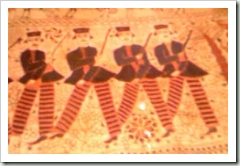Reading Diane Purkiss’s The English Civil War, as I have been for a long while – but there will be a review soon, I promise, I’ve been put on the trail of Elizabeth Alkin, spy and nurse, c.1600–1655?. From the ONDB (subscription sorry):
Employed from the beginning of the civil war as a spy by the earl of Essex, Sir William Waller, and Thomas Fairfax, in 1645 and 1647 Alkin received payments from the committee for the advancement of money for several ‘discoveries’, including information about the activities of George Mynnes, a Surrey ironmaster who was supplying royalist forces with iron and wire. Increasingly she seems to have concentrated her intelligencing activity on the London news press: in 1648 she was on the trail of Mercurius Melancholicus and the Parliament Kite, and in February 1649 Mercurius Pragmaticus called her an ‘old Bitch’ who could ‘smell out a Loyall-hearted man as soon as the best Blood-hound in the Army’ (Mercurius Pragmaticus, sig. 2v). …
In June 1649 Alkin was sent to ‘the house of correction’ for ‘great incivilities’ to Sir James Harrington MP, and the following month was involved in a fracas in the Salutation tavern in Holborn with some soldiers who apparently suspected her of being a royalist (Williams, 131–3). A dispute in the same year over her occupation of the house of Stephen Fosett, surgeon to Sir Arthur Aston (governor of Oxford during the first war and responsible, she claimed, for her husband’s death), resulted in a grant of £50 and a house.
She was evidently a woman who could stand up for herself.
The nursing seems to have come later – she was paid by the government after the First Anglo-Dutch War for her care of wounded soldiers, The ONDB says there was a petition requesting that she be buried in the cloisters of Westminister Abbey – it doesn’t say if that was successful – presumably that’s unknown. She’s got quite some coverage in medical history journals, so she must have made some real efforts for the soldiers – indeed it seems she destroyed her own health in the process.
She’s had a whole book written about her – I. MacDonald, Elizabeth Alkin: a Florence Nightingale of the Commonwealth (1935) – have to check it out. Something about that title, however, doesn’t fill me with confidence.
On the web, there’s a review of a book in which she has her own chapter, a House of Commons Journal entry, but not a lot else.


 About
About